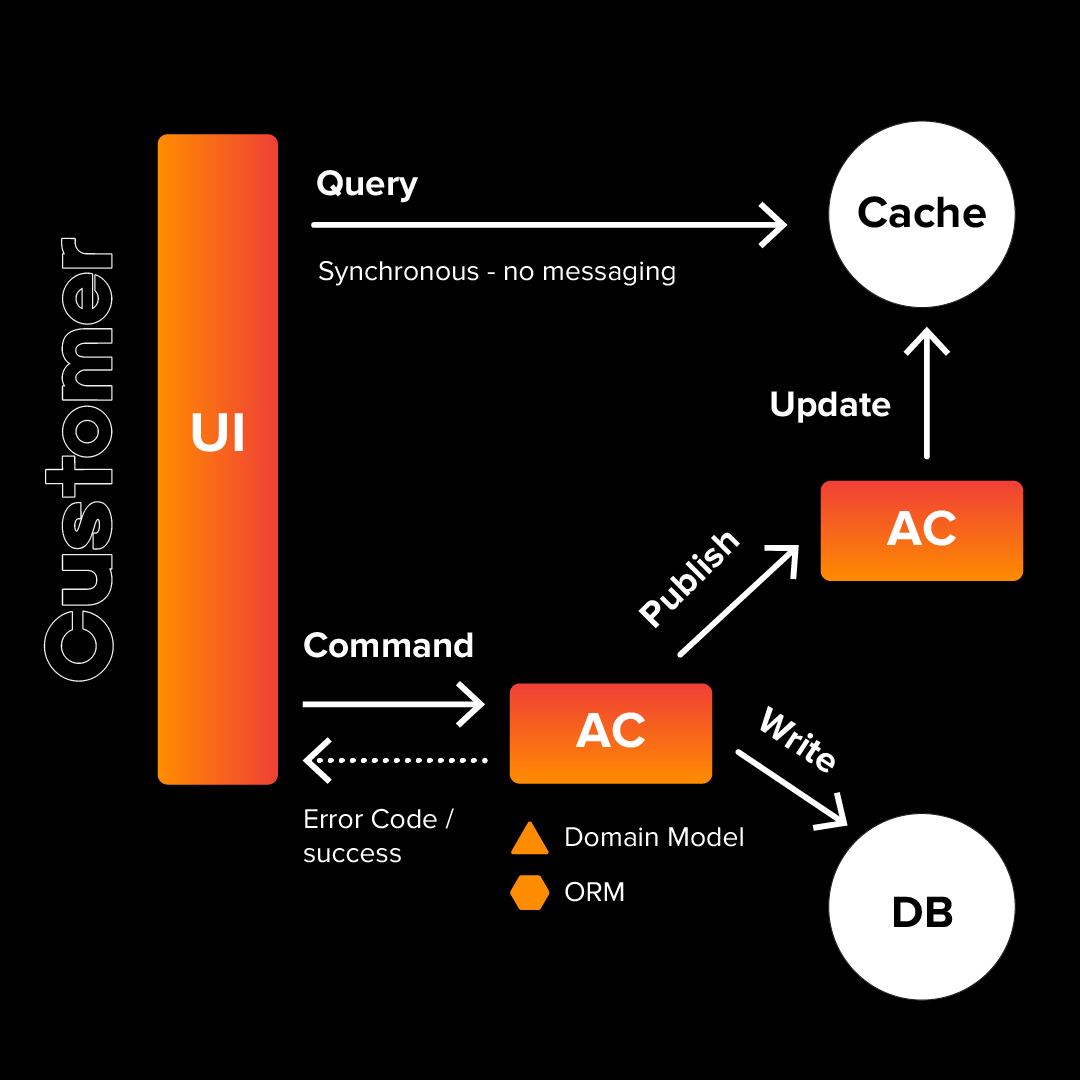What is CQRS and why do you need it as a developer?
CQRS is deciphered as Command and Query Responsibility Segregation. It is an architectural design pattern which states that we must separate the operations for reading the data from the operations for writing or updating the data.
October 5, 2021 • Development
CQRS is deciphered as Command and Query Responsibility Segregation. It is an architectural design pattern which states that we must separate the operations for reading the data from the operations for writing or updating the data.
CQRS is not a pattern that encompasses the whole application. It is a concept that builds on Domain-Driven Design (DDD).
An important strategic concept of DDD is the so-called Bounded Context. In a typical application, there are multiple bounded contexts, any of which can be implemented the way it makes sense.
For instance:
- User Management -> CRUD
- Invoicing -> CRUD
- Insurance Policy Management (the Core Domain) -> CQRS
Pros
- Separating write from read activities allows the use of the best database technology (a SQL database for writing and a non-SQL database for reading).
- Reducing response latency by placing read data sources in strategic geolocations for better performance.
- Provides more efficient scaling of storage capacity based on real-world usage.
Cons
- Requires expertise in a variety of database technologies.
- Higher costs in terms of hardware or if a cloud provider is used.
- Requires special consideration in terms of Service Level Agreements.
- More points of failure, which implies comprehensive monitoring and fail-safety mechanisms.
When to use
Large team
One can split development tasks between people easily. The top people can work on domain logic leaving the usual stuff to less skilled developers.
Difficult business logic
CQRS helps avoid mixing domain logic and infrastructural operations.
Scalability matters
Helps achieve great read and write performance (because queries can be optimized to do fast read operations).
What about the implementation?
Queries are a key element used for reading data. How are they helpful in the implementation process of CQRS?
1. They offer the possibility of having one table for each view. Thus, the client can simply SELECT * FROM MyViewTable.
2. There is no need for a relational database.
3. They can be scaled horizontally.
What about the commands used for mutating data?
Here are some tips:
1. Use the main data store for commands.
2. Queue commands and have notifications about their execution statuses.
3. Remember there’s no need to keep the server always on since queues can hold requests.
4. After the command was executed, update the main database and query the data store concurrently.

Summary
- CQRS is used for data reading and mutating separation.
- CQRS is not a pattern that encompasses the whole application.
- CQRS is a concept that builds on Domain Driven Design (DDD).
- CQRS improves performance but is harder and more time consuming to implement.
- CQRS has huge scalability.

Continue reading
Two years with Mediapark
October 7, 2021
One year with Mediapark
October 5, 2021
Your new eCommerce product page
November 18, 2020
30 shopify extensions
October 29, 2020
How Can You Improve Your UX with Micro-interactions?
July 7, 2020
Lessons learned or how to improve your inner manager
June 11, 2020
Get ready for Web Summit 2022
June 4, 2020
Fixed Price vs Time and Materials – which pricing model to choose for your project?
May 4, 2020
The client hates your design. Now what?
March 10, 2020
5 surefire ways to break your creative block
November 13, 2019